How to make perfect modelling chocolate, and how to work with it.
I was attracted to working with modelling chocolate because it doesn’t dry out and it sets very solid at room temperature allowing sculps to be built quickly. Best of all, edges blend perfectly so there are no seams and details can be remodelled and reworked, built up or shaved down repeatedly until they are perfect.
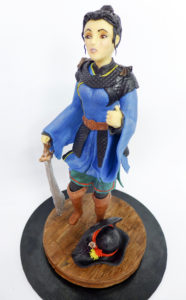 I experimented a lot to get a modelling chocolate recipe that performs well for me, is cheap to make and can be consistently and quickly made in large quantities to use on the same day.
I experimented a lot to get a modelling chocolate recipe that performs well for me, is cheap to make and can be consistently and quickly made in large quantities to use on the same day.
Video below showing the whole process in real time from start to usable product in 20 minutes. It’s a fairly rough video but it covers everything.
The recipe I use is a simple ratio of 4.5:1 by weight of white compound chocolate to light corn syrup. This makes a very firm, all-purpose modelling chocolate. I’ve found it’s easier not to use expensive couverture chocolate, a good white compound chocolate works best for texture and still tastes pretty good.
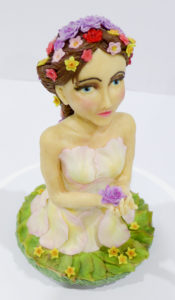
In general corn syrup produces smoother, stretchier sugar products than glucose. Fondant I make with corn syrup is stretchier and smoother than fondant made with glucose, which is “shorter” and more brittle. I found it was similar for modelling chocolate when I was developing this recipe. Karo corn syrup was the best, but it can be expensive in some countries.
I experimented to find an alternative when a friend suggested Korean corn syrup. You can find Korean corn syrup at most local Asian grocers for a lot less, and nearly every Korean grocer will have it. I buy 5 litres for $15 and every brand I have tried has performed better than glucose, been a cheaper than glucose and performs as well as the more expensive Karo Corn syrup.
Bulk compound white chocolate is the best way to lower the cost. You can get 15kg of Callebaut white compound chocolate for $130 ($90 on special) at most baking shops and likely cheaper again elsewhere. This makes a firm, easy to work with modelling chocolate that tastes really as good, easily as good as cadbury and it’s much easier to mix and work with. Mixing at a ratio of 4.5:1 means you can potentially make 18Kg of modelling chocolate for around $105. Other bulk white chocolate brands can be bought for $79 for 15kg – dropping the cost further.
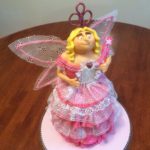
Gru-Zinkerbell cake. Modelling chocolate and sugar lace
Firm Modelling Chocolate Recipe
Ingredients:
450g white chocolate to 100g of corn syrup.
Method:
Weigh the white compound chocolate out in grams. Divide the weight by 4.5 and weigh out that amount of corn syrup.
If you have 600 grams of white compound chocolate you will need to weigh out 133 grams of corn syrup.
Weigh the chocolate and break it up into a clean, dry microwave proof bowl.
 Microwave in bursts of no more than 30 seconds stirring in between blasts. The time in the microwave will need to be reduced if you are working with smaller portions. I usually work in batches of 2 kilos grams or more, so I can put the chocolate in for longer stretches. 600 grams usually only takes a total of 90 seconds.
Microwave in bursts of no more than 30 seconds stirring in between blasts. The time in the microwave will need to be reduced if you are working with smaller portions. I usually work in batches of 2 kilos grams or more, so I can put the chocolate in for longer stretches. 600 grams usually only takes a total of 90 seconds.
Do not overheat the chocolate. Ideally, use the residual heat from each interval in the microwave to melt the chocolate by stirring it. A plastic bowl can help to prevent “hot spots” that sometimes happen from a glass bowl getting too hot, but I like to use the residual heat from a glass bowl to finish melting the chocolate and have it in the microwave for less time.
Ensure the chocolate is completely melted and all the lumps are gone. Do not try to rush the melting.
Allow the chocolate time to cool down slightly, it should be approximately body temperature or slightly cooler before combining.
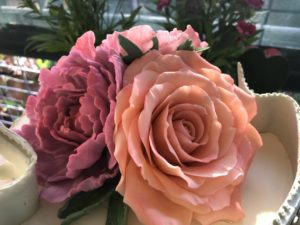
100% edible flowers. Firm modelling chocolate with a rice krispie centre
In a smaller bowl weigh out the correct amount of syrup for the amount of chocolate you’re using. If using glucose, warm the syrup in the microwave for a few seconds, do not overheat it and never boil.
Corn syrup is already liquid at room temperature so it doesn’t need to be warmed. Scrape the syrup into the melted chocolate and gently, but thoroughly fold through using a spatula. Scrape the chocolate off the sides and bottom folding through carefully until there are no large streaks of unmelted chocolate left. Ensure nearly all the chocolate has been mixed through, it is crucial at this stage not to over stir. The chocolate will begin to seize up very quickly. It only takes a few strokes through the chocolate and in just a few turns the mixture will lose its shine start to look rough and slightly crumbly. The aim is to make the chocolate seize up evenly. Do not stir any further, or the fat will separate, it’s better to stop stirring earlier and work the lumps out later than risk separating the oils from the chocolate. Transfer the mixture to a large ziplock bag or two and press flat to fill the bag.
If the mixture starts to look greasy or the oils begin to separate then stop immediately and transfer the mixture to a large ziplock bag and press flat.
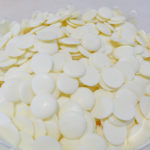
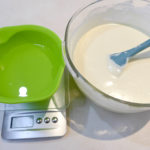
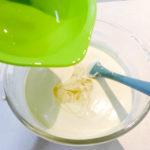
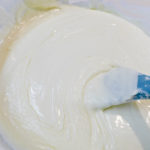
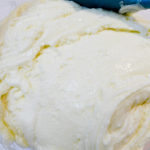
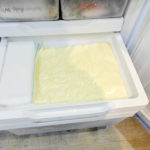
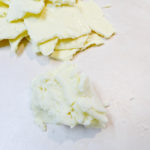
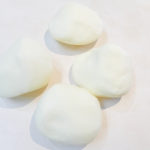
Other recipes suggest the chocolate should now be wrapped and put aside to cool and set overnight, but I rarely have the time, and in my usually hot kitchen it would take days to set… So I speed up the process – interestingly, my impatience and need to speed up the process resulted in a better product.
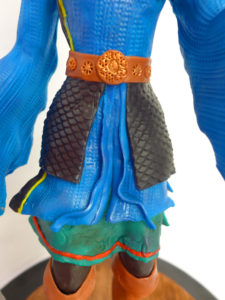 I usually make and use a very large quantity of modelling chocolate on the same day. The only way to do this is by using a freezer. Once mixed I spread the mixture into a thin sheet inside a very large zip lock bag (or a couple of them) and lay the slabs of chocolate in the freezer for 10-15 minutes until most of the mix is firm and leathery. Once the chocolate has fully set it will be very firm and a little crumbly. Knead small pieces of it until you have a smooth plasticine like mixture. If the chocolate is too firm to knead, pop it in the microwave for 3 or 5 seconds to soften it up slightly. If the mixture has a few small lumps you can work them smooth by pinching them flat with your thumb against the work surface, melting them a little with the heat from your hands and working through the modelling chocolate. If there are a lot of lumps, pop the whole mix in the microwave and heat gently for a few seconds at a time until the mixture is soft, knead it just enough to mix the now slightly melted lumps through and again set the chocolate aside in a zip lock bag to set up before using it.
I usually make and use a very large quantity of modelling chocolate on the same day. The only way to do this is by using a freezer. Once mixed I spread the mixture into a thin sheet inside a very large zip lock bag (or a couple of them) and lay the slabs of chocolate in the freezer for 10-15 minutes until most of the mix is firm and leathery. Once the chocolate has fully set it will be very firm and a little crumbly. Knead small pieces of it until you have a smooth plasticine like mixture. If the chocolate is too firm to knead, pop it in the microwave for 3 or 5 seconds to soften it up slightly. If the mixture has a few small lumps you can work them smooth by pinching them flat with your thumb against the work surface, melting them a little with the heat from your hands and working through the modelling chocolate. If there are a lot of lumps, pop the whole mix in the microwave and heat gently for a few seconds at a time until the mixture is soft, knead it just enough to mix the now slightly melted lumps through and again set the chocolate aside in a zip lock bag to set up before using it.
Occasionally I have had to repeat this process a couple of times to remove lumps or because I have overheated/overworked the chocolate with my hands at the initial kneading stage and made the oils start to separate, but the freezer fixes everything.
Using a combination of the microwave and freezer I can get excellent modelling chocolate made in well under half an hour while I’m doing other things and have is coloured and ready to use right away.
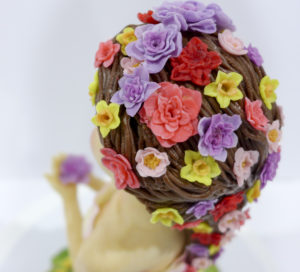
Wafer-thin micro modelling chocolate flowers
NB: When you are making the modelling chocolate, if the oils start to come out of the mixture, you have likely overheated the syrup or the chocolate or over-stirred the mixture or kneaded it too much while it’s warm. When you see oil come out of the mixture, stop immediately, transfer it to a zip lock bag and put it in the freezer and repeat the setting and kneading process until the mixture is smooth, or if you’re working on a piece and it starts to get oily stop and let it cool down, or pop it in a fridge for a few seconds before continuing.
Some recipes recommend squeezing the oils out of the chocolate and soaking them up with a paper towel – Do not do this! The cocoa fats/vegetable fats are what makes modelling chocolate so amazing to work with. If you remove the fat you have not made modelling chocolate, you’ve made sugar paste. It will not smooth and blend as well as real modelling chocolate.
The main and most important two things to remember when making or working with modelling chocolate are to never overheat and never overwork the mixture when it’s warm. Additionally, use tools instead of hands where possible and on extremely hot days have a shelf in the freezer set aside so you can pop the piece/pieces you are working on in the freezer for a few minutes to firm up before you continue to work on it. Be careful not to leave the piece in the fridge/freezer to get too cold as you’re working or it might start to sweat and will become sticky. If too much water gets incorporated/absorbed it won’t set as well.
Glucose Instead of Corn Syrup
Corn syrup can be hard to get hold of in some countries. If you can only get Glucose you can still make an excellent modelling chocolate, but the ratios are very different.
Ingredients:
500g white compound chocolate
135g glucose syrup – barely warmed
1/2 tsp water – more as needed
Method:
As above- melt chocolate. Gently warm the glucose.
Mix together until combined. Bag up and chill until leathery or set.
Knead, warm it in the microwave in 5 second bursts if necessary, work in 1/2 tsp of water, add more drop by drop if needed until the modelling chocolate is no longer dry and brittle feeling. Set aside to cure, (cool back down to room temperature) for an hour. Knead briefly before using, add more water if necessary.
Colouring Modelling chocolate:
Modelling chocolate takes regular liquid gel paste colours extremely well. I get more vibrant and dark colours in modelling chocolate than I ever have with fondant.
A few drops of gel paste colour will work through easily and give a very vibrant result. However, for very dark colours like bright reds or black it can help to mix in a bit of fondant, it’s not at all necessary, it just allows the chocolate to take a lot more colour without getting too soggy. Firm modelling chocolate will take a huge amount of colour without any issues and doesn’t need the added fondant.
For bright white modelling chocolate add a few drops of Americolor white, some food grade titanium dioxide colouring powder or just use a lighter coloured compound chocolate. For race-car red or jet-black knead in about 1.5 tsp of gel colour to 150g of white modelling chocolate then set it aside in a cool place or the fridge for 15 minutes to firm up again before kneading to use. The colour darkens up further after a few minutes resting.
You can also colour modelling chocolate with edible petal dusts or by painting with decorating alcohol mixed with gel, liquid or powdered colour.
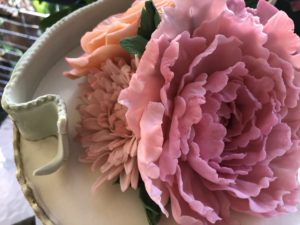
Peony made from firm modelling chocolate with a rice krispy core. 100% edible and delicious!
Counter-intuitive texture fix:
I noticed my dark red and black modelling chocolates had a better texture and were easier to work with than the uncoloured mix. That’s when I realised I could use a tiny amount of water to correct the texture. I occasionally make white modelling chocolate with “real”/eating chocolate, made with cocoa butter instead of vegetable fat. This usually results in a dry, brittle, rough-textured paste. A couple of drops of water kneaded in smooths the mix out and makes it easier to work with. This is particularly useful with dark chocolate and most brands of white compound chocolate benefit from a drop of water. Just a few drops of water will smooth the mix and make it less crumbly. Do not add the water until the mixture is made, and be very sparing with the amount of water added, you can always add more, but can’t remove it. To correct the texture of 250 grams of brittle modelling chocolate dip a fingertip in water, then knead it through. set aside to firm up and test for texture, repeat if needed.
Some brands of chocolate are terrible for making modelling chocolate with, especially regular eating chocolate like Lindt. If the mix is too crumbly, a tiny amount of fondant will help emulsify and smooth out the mix.
Hot hands/hot climate:

If you have extremely hot hands and want a more stable mixture that needs to stay flexible for longer, add a little fondant to the mixture, just keep the ratio to, or below 5:1 modelling chocolate to fondant. Modelling chocolate mixed with fondant in a ratio of roughly 5 parts chocolate to 1 part fondant has some interesting and handy properties. It can be smoothed and joined seamlessly by applying gentle heat or with little water, it’s also easier to paint with liquid colours or lustre dust/alcohol paint than straight modelling chocolate and it is more heat resistant when you are modelling pieces with your hands. In extreme humidity, modelling chocolate can sweat and get sticky, dust your hands and the chocolate with cornflour to stop it sticking while working with it.
Ratios to use for different kinds of modelling chocolate.
I prefer a very firm setting modelling chocolate, often stabilised with a little fondant because I have super hot hands, and I live in Perth, WA, where the weather is insanely hot nine months of the year and it’s still hot inside for the other three months because everyone else in the house actually feels the “cold” and insists on heating the house… I don’t want my figures to droop in the heat or melt too quickly while I am trying to shape them, so I make a slightly firmer mix than most European recipes would recommend.
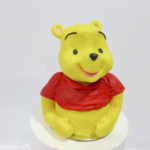
For firm/warm climate white modelling chocolate, the ratio should be between 4.5 and 5 parts white chocolate to 1 part corn syrup.
Medium setting/cool climate white modelling chocolate: 3.5-4 parts white chocolate to 1 part corn syrup.
Soft white modelling chocolate: 2.5-3 parts white chocolate to 1 part corn syrup.
Firmer modelling chocolate is more structural, I prefer using a 4.5:1 ratio as it provides the structural integrity I like and is still just soft enough to be able to add detail to and smooth the surface. I use it to make ultra detailed thin petals for flowers and sculptures, I use it for nearly everything.
I would only ever make soft modelling chocolate if it is going to be used to very thinly cover another surface or to cover a firmer part of a figure, the softer chocolate is easier to smooth, and easily takes a lot of detail but it is not useful for structural parts or pieces. Soft to medium setting modelling chocolate is nice to cover cakes with instead of fondant.
Medium firmness modelling chocolate is nice for ultra detailed less-structural pieces.
Ratios for dark modelling chocolate:
I use Cadbury Old Gold dark chocolate (40% Cocoa product) or Callebaut Dark Chocolate Callets for best taste and smoothness. They’re both really nice to work with and both taste great.
Firm: 3-3.5 parts Dark chocolate to 1 part corn syrup
Medium: 2.5-3 parts Dark chocolate to 1 part corn syrup
Soft: 2 parts Dark chocolate to 1 part corn syrup
I tend to use firm dark modelling chocolate for most things.
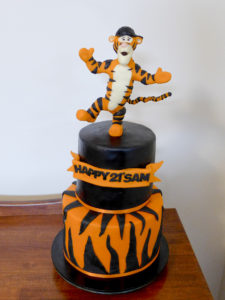 Tips for working with Modelling Chocolate:
Tips for working with Modelling Chocolate:
The key rule is to not work on warm modelling chocolate. Once it’s warm stop moving/sculpting it, leave it alone or the oil will squeeze out. Chill or leave to rest for a while if the surface becomes greasy or oily while working to stop too much fat from escaping. A pasta roller can be used to help roll out thin sheets of chocolate and is used by some people to mix and further knead their chocolate without adding extra heat from their hands. I don’t use a pasta roller because I can’t be bothered setting it up and a small nylon rolling pin works just fine.
Modelling chocolate can be rolled very thinly, to the point the chocolate is fabric-like and nearly transparent. Dust the surface and the rolling pin generously with cornflour to stop it sticking.I use thin modelling chocolate for super detailed flowers and for clothing figurines. Super thin sheets of modelling chocolate are perfect for making letters with Clickstix and Tappits, dust the chocolate and the cutters with cornflour and they’ll pop out easily. If they start to stick then place them in the fridge to set and they will release from the moulds more easily, but I don’t need to do this if I avoid handling the paste as much as possible and use a lot of cornflour. The writing on the banner on the Tigger cake to the right is made with Windsor Clickstix.
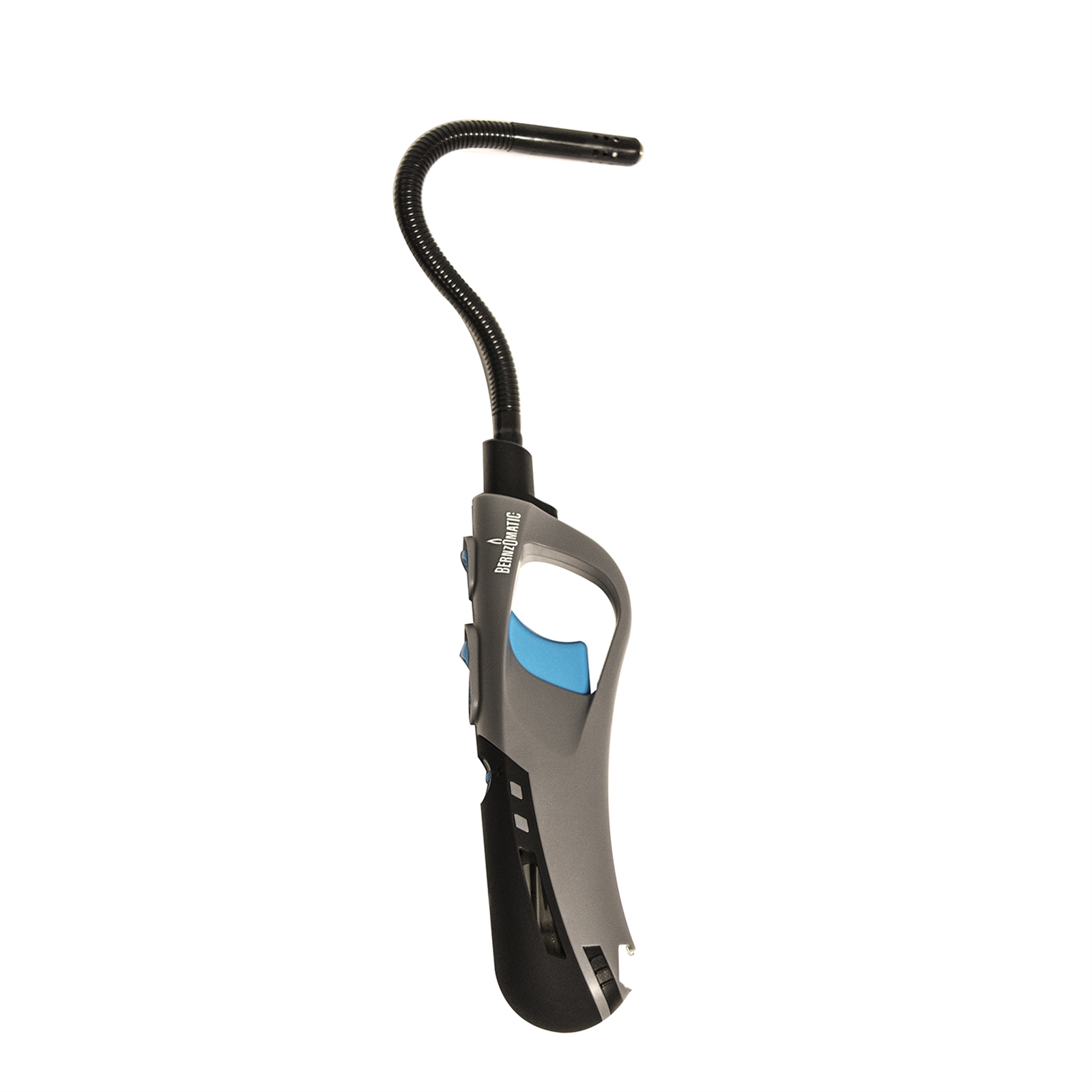
The BernzOmatic Premium Flexible Lighter is the ultimate chocolate tool. $9.99 from any Bunnings Hardware store!
Use a gas gun or barbecue lighter with a focused flame to gently warm the surface the letters will be fixed to, or gently warm the backs of the letters. They will then stick firmly to fondant, chocolate or modelling chocolate. You can get a focussed flame (windproof) gas lighter from a hardware store, they work like a mini crème brûlée torch, but they’re a lot more accurate and gentle for detailed chocolate work, and they’re cheaper. Use the tip of a scalpel or a scribe tool to lift and move the letters around so they don’t melt from your hands and stretch out of shape. The letters can also be fixed to fondant or chocolate with a tiny amount of water, royal icing, or piping gel. Pass the torch over the surface of the letters a couple of times to make them go shiny, the cornflour will be absorbed leaving no white marks and the letters will round off slightly.
Surfaces can be shaved down, built up and smoothed with your hands or very basic tools, once the surface is near smooth it can be further smoothed further with a little water and pressure or by applying heat with your hands or by passing a mini blowtorch over the surface a few times quickly, then using hands or tools to finish smoothing. Once the surface is very smooth, passing a torch over a few more times will bring fat to the surface and start to crystallise the sugar in the chocolate forming a tough shiny shell. This makes for an attractive finish but will make the surface prone to cracking if it is remoulded.
Impression mats and moulds work well with modelling chocolate, and most are a lot faster and easier to use with modelling chocolate than with fondant. Dust the mould with cornflour, press the chocolate in with a palette knife, smooth off the excess with the knife then peel/pop the piece out. Freeze more complex or detailed work for a few minutes to make removing the mould easier.
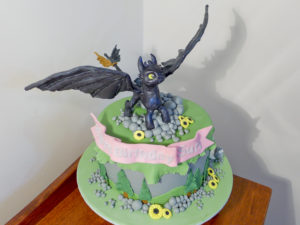
Dragon is firm modelling chocolate on armature wire. Modelling paste banner and homemade fondant on main cake
Modelling paste
Mix a small amount of firm modelling chocolate into fondant to create a modelling paste with similar properties to Saracino, Cake Duchess or Laped Daisy modelling paste. Weigh out ready to roll fondant then knead in roughly between one fifth and one quarter the fondant’s weight in modelling chocolate. It will depend on the fondant used, as to how much chocolate is needed. Do not add any additional tylose or the mix will become very rubbery and unusable.
I don’t use modelling paste very often as I prefer working with straight modelling chocolate, but it is super handy.
Covering cakes
Modelling chocolate on its own has no stretch, so cakes need to be covered using the paneling method. This method works well as seams and joins can be blended out completely. 3D cakes can be covered in patches, again the ability to blend joins makes a super smooth finish. I often use a half-half mixture of fondant and modelling chocolate to make a stretchier version. The 50/50 mix takes colour more easily than fondant alone and is very easy to work with. It’s great for creating vibrantly coloured super shiny cakes like car cakes or the suitcase below where a bit of extra stretch was handy to create the smooth covering quickly.
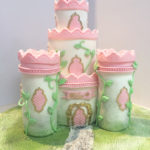
Castle cake covered in 50/50 modelling chocolate and homemade fondant

Suitcase cake, covered in 50/50 modelling chocolate/fondant icing
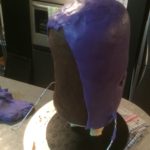
Patching Firm Modelling Chocolate Over a Ganached 3D Cake
Making modelling chocolate start to finish in real time
My experiments with supermarket chocolate.
Testing a few different supermarket white chocolate brands.
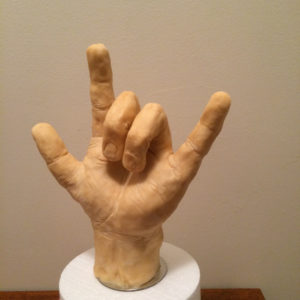
Hand – Home Made Modelling Chocolate and Americolor Ivory Gel colour
I used to be just a home/hobby baker, I don’t have time to source specific couverture chocolate or search for a specific brand, so I tested a few of the chocolates that I can get at a local supermarket at short notice if I need to. Another bonus of this is that Cadbury chocolate goes on special regularly, so do the nestle baker’s choice white melts and a few others so it was worth testing to see what I should grab when it’s cheap and I’m out of my regular bulk chocolate. I tested for taste, how easy it is to get a smooth and seamless shape and how crumbly they are when reshaped. Chart of results below:
I tested Cadbury Dream white chocolate, Cadbury Melts white chocolate, Nestle Baker’s Choice white melts – these are a kind of candy melt not actually white chocolate, and Nestle Milky bar.
In short, the best texture and mouldability was the Nestle baker’s choice white melts, but they tasted pretty average at the time. Just slightly behind for texture was the Cadbury white chocolate melts, these had the best flavour by far and had an okay texture but the oils separate out easily and it’s brittle and more temperamental. The Cadbury dream was almost identical to the Cadbury melts for taste, texture, and usability. The milky bar had horrible texture, would not set and didn’t taste good as modelling chocolate. The milky bar was so bad, I repeated the experiment twice to make sure it wasn’t just a result of bad preparation, it still did not set, had horrible texture and tasted gross… which was pretty unexpected as I normally like this chocolate bar…
I concluded at the time that for structural elements that aren’t designed just to be eaten, Nestle baker’s choice melts are an excellent option, they updated the recipe recently so it now tastes good as well. For element’s that where flavour is more important I used to mix the Nestle and Cadbury together, the flavour was better and the texture was all right, and can be further corrected with a drop of water.
For the majority of my work I like to use bulk Callebaut white compound chocolate, it’s the most delicious, easy to work with and I can buy it in 15kg lots making it super affordable. But If I run out of my bulk chocolate now I know I can use what’s on special, Nestle, or Nestle blended with Cadbury to produce a great tasting and great textured product.
The best way to become good at making modelling chocolate is to buy a few blocks of different kinds of chocolate and experiment 200 grams at a time. I have tried a lot of different recipes including ones with glucose instead of corn syrup, ones with water and glucose and all sorts of other variations. Generally, I avoid candy melts, but the nestle bakers choice ones just happened to be excellent and all the other bulk compound chocolate I have used have been excellent, especially Callebaut. This recipe and these techniques work for me, give it a go. Experiment, keep notes and find what works for you.
For a laugh, here were my first experiments
Experiments by weight:
180g Nestle Milky Bar: 38g Corn Syrup
182g Cadbury Melts Real White Chocolate: 40g Corn Syrup.
182g Nestle Baker’s Choice Melts – white: 39g Corn Syrup.
182g Cadbury Dream white chocolate: 40g Corn Syrup
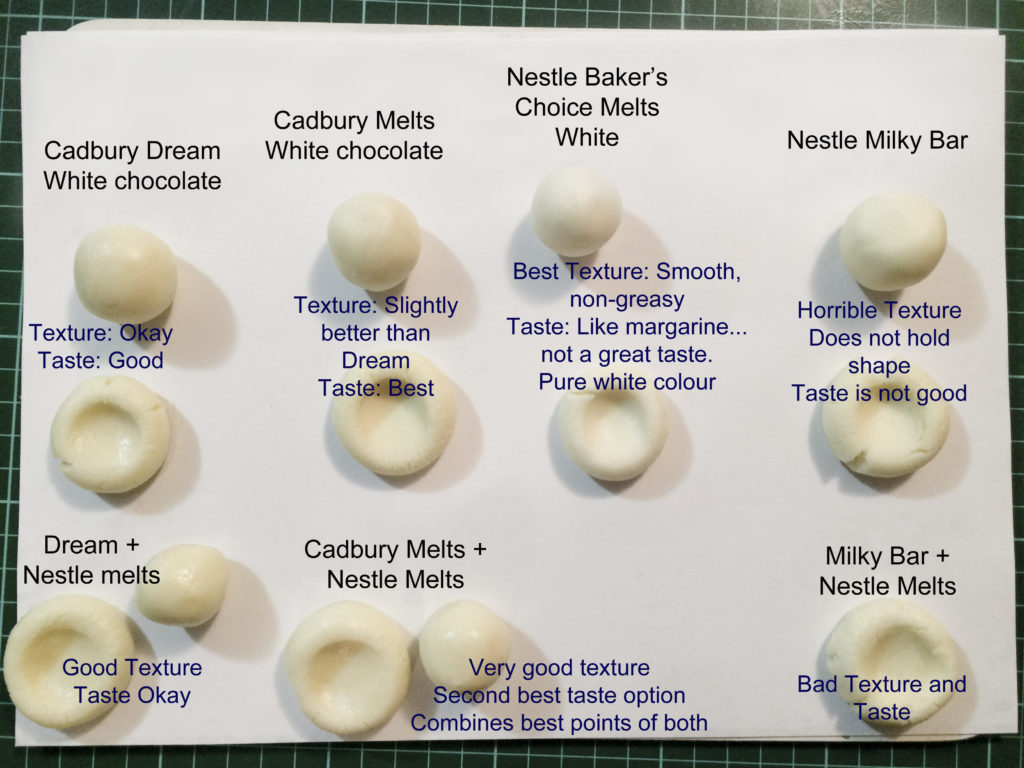
Modelling chocolate test chart
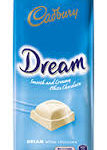
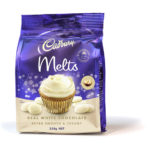
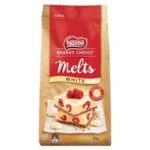
ecipe Card


- 4.5 parts white compound chocolate to 1 part Corn syrup
- The recipe I use is a simple ratio of 4.5:1 by weight of white compound chocolate to light corn syrup. This makes a very firm, all-purpose modelling chocolate. I’ve found it’s easier not to use expensive couverture chocolate, a good white compound chocolate works best for texture and still tastes pretty good.
- If the piece is designed for eating I have used Cadbury chocolate, but using regular eating white chocolate will make the mixture grainy and a lot harder to work with.
- I’ve found that in general corn syrup produces smoother, stretchier sugar products than glucose. Fondant I make with corn syrup is stretchier and smoother than fondant made with glucose, which is “shorter” and more brittle. I found it was similar for modelling chocolate when I was developing this recipe. Karo corn syrup was the best, but it’s super expensive, it’s $17 for 473ml at my local cake supplies shops.
- I experimented to find an alternative when a friend suggested Korean corn syrup. You can find Korean corn syrup at most local Asian grocers for a lot less, and nearly every Korean grocer will have it. I buy 5 litres for $15 and every brand I have tried has performed better than glucose, been a cheaper than glucose and performs as well as the more expensive Karo Corn syrup.
- Bulk compound white chocolate is the best way to lower the cost. You can get 15kg of Callebaut white compound chocolate for $130 ($90 on special) at most baking shops and likely cheaper again elsewhere. This makes a firm, easy to work with modelling chocolate that tastes really as good, easily as good as cadbury and it’s much easier to mix and work with. Mixing at a ratio of 4.5:1 means you can potentially make 18Kg of modelling chocolate for around $105. Other bulk white chocolate brands can be bought for $79 for 15kg – dropping the cost further.
- Weigh the white compound chocolate out in grams. Divide the weight by 4.5 and weigh out that amount of corn syrup.
- If you have 600 grams of white compound chocolate you will need to weigh out 133 grams of corn syrup.
- Or an easier ratio: 450g white chocolate to 100g of corn syrup.
- Weigh the chocolate and break it up into a clean, dry microwave proof bowl.
- Microwave in bursts of no more than 30 seconds stirring in between blasts. The time in the microwave will need to be reduced if you are working with smaller portions. I usually work in batches of 600 grams or more, so can put the chocolate in for longer stretches. 600 grams usually only takes a total of 2 minutes.
- Do not overheat the chocolate. Ideally, use the residual heat from each interval in the microwave to melt the chocolate by stirring it. A plastic bowl can help to prevent “hot spots” that sometimes happen from a glass bowl getting too hot, but I like to use the residual heat from a glass bowl to finish melting the chocolate and have it in the microwave for less time.
- Ensure the chocolate is completely melted and all the lumps are gone. Do not try to rush the melting.
- Allow the chocolate time to cool down slightly, it should be approximately body temperature or slightly cooler before combining.
- In a smaller bowl weigh out the correct amount of syrup for the amount of chocolate you’re using. If using glucose, warm the syrup in the microwave for a few seconds, do not overheat it and never boil. Glucose needs to be just slightly warm to the touch, but not hot. Corn syrup is already liquid at room temperature so it doesn’t need to be warmed. Scrape the syrup into the melted chocolate and gently, but thoroughly fold through using a spatula. Scrape the chocolate off the sides and bottom folding through carefully until there are no large streaks of unmelted chocolate left. Ensure nearly all the chocolate has been mixed through, it is crucial at this stage not to over stir. The chocolate will begin to seize up very quickly. It only takes a few strokes through the chocolate and in just a few turns the mixture will lose its shine start to look rough and slightly crumbly. The aim is to make the chocolate seize up evenly. Do not stir any further, or the fat will separate, it’s better to stop stirring earlier and work the lumps out later than risk separating the oils from the chocolate. Transfer the mixture to a large ziplock bag or two and press flat to fill the bag.
- If the mixture starts to look greasy or the oils begin to separate then stop immediately and transfer the mixture to a large ziplock bag and press flat.
- Other recipes suggest the chocolate should now be wrapped and put aside to cool and set overnight, but I rarely have the time, and in my usually hot kitchen it would take days to set… So I speed up the process – interestingly, my impatience and need to speed up the process resulted in a better product.
- I usually make and use a large quantity of modelling chocolate on the same day. The only way to do this is by using a freezer. Once mixed I spread the mixture into a thin sheet inside a very large zip lock bag (or a couple of them) and lay the slabs of chocolate in the freezer for 10-15 minutes until most of the mix is firm and leathery. Once the chocolate has fully set it will be very firm and a little crumbly. Knead small pieces of it until you have a smooth plasticine like mixture. If the chocolate is too firm to knead, pop it in the microwave for 3 or 5 seconds to soften it up slightly. If the mixture has a few small lumps you can work them smooth by pinching them flat with your thumb against the work surface, melting them a little with the heat from your hands and working through the modelling chocolate. If there are a lot of lumps, pop the whole mix in the microwave and heat gently for a few seconds at a time until the mixture is soft, knead it just enough to mix the now slightly melted lumps through and again set the chocolate aside in a zip lock bag to set up before using it.
- Occasionally I have had to repeat this process a couple of times to remove lumps or because I have overheated/overworked the chocolate with my hands at the initial kneading stage and made the oils start to separate, but the freezer fixes everything.
- Using a combination of the microwave and freezer I can get excellent modelling chocolate made in well under half an hour while I’m doing other things and have is coloured and ready to use right away.
- NB: When you are making the modelling chocolate, if the oils start to come out of the mixture, you have likely overheated the syrup or the chocolate or over-stirred the mixture or kneaded it too much while it’s warm. When you see oil come out of the mixture, stop immediately, transfer it to a zip lock bag and put it in the freezer and repeat the setting and kneading process until the mixture is smooth, or if you’re working on a piece and it starts to get oily stop and let it cool down, or pop it in a fridge for a few seconds before continuing.
- Some recipes recommend squeezing the oils out of the chocolate and soaking them up with a paper towel – Do not do this! The cocoa fats/vegetable oils are what makes modelling chocolate so amazing to work with, if you remove it you have not made modelling chocolate, you’ve made sugar paste. It will not smooth and blend as well as real modelling chocolate.
- The main and most important two things to remember when making or working with modelling chocolate are to never overheat and never overwork the mixture when it’s warm. Additionally, use tools instead of hands where possible and on extremely hot days have a shelf in the freezer set aside so you can pop the piece/pieces you are working on in the freezer for a few minutes to firm up before you continue to work on it. Be careful not to leave the piece in the fridge/freezer to get too cold as you’re working or it might start to sweat and will become sticky. If too much water gets incorporated/absorbed it won’t set as well.
- Modelling chocolate takes regular liquid gel paste colours extremely well. I get more vibrant and dark colours in modelling chocolate than I ever have with fondant.
- A few drops of gel paste colour will work through easily and give a very vibrant result. However, for very dark colours like bright reds or black it can help to mix in a bit of fondant, it’s not at all neccessary, it just allows the chocolate to take a lot more colour without getting too soggy. Firm modelling chocolate will take a huge amount of colour without any issues and doesn’t need the added fondant.
- For bright white modelling chocolate add a few drops of Americolor white, some food grade titanium dioxide colouring powder or just use a lighter coloured compound chocolate. For race-car red or jet-black knead in about 1.5 tsp of gel colour to 150g of white modelling chocolate then set it aside in a cool place or the fridge for 15 minutes to firm up again before kneading to use. The colour darkens up further after a few minutes resting.
- I noticed my dark red and black modelling chocolate had a better texture and were easier to work with than the uncoloured mix. That’s when I realised I could use a tiny amount of water to correct the texture. I occasionally make white modelling chocolate with “real”/eating chocolate, made with cocoa butter instead of vegetable fat. This usually results in a dryer, brittle, rough-textured paste. A couple of drops of water kneaded in smooths the mix out and makes it easier to work with. This is particularly useful with dark chocolate and occasionally even some brands of white compound chocolate benefit from a drop of water. Just a few drops of water will smooth the mix and make it less crumbly. Do not add the water until the mixture is made, and be very sparing with the amount of water added, you can always add more, but can’t remove it. To correct the texture of 250 grams of brittle modelling chocolate dip a fingertip in water, then knead it through. set aside to firm up and test for texture, repeat if needed.
- Some brands of chocolate are terrible for making modelling chocolate with, especially regulare eating chocolate. If the mix is too crumbly, a tiny amount of fondant will act as an emulsifier and smooth out the mix.
- If you have extremely hot hands and want a more stable mixture that needs to stay flexible for longer, add a little fondant to the mixture, just keep the ratio to, or below 5:1 modelling chocolate to fondant. Modelling chocolate mixed with fondant in a ratio of roughly 5 parts chocolate to 1 part fondant has some interesting and handy properties. It can be smoothed and joined seamlessly by applying gentle heat or with little water, it’s also easier to paint with liquid colours or lustre dust/alcohol paint than straight modelling chocolate and it is more heat resistant when you are modelling pieces with your hands. In extreme humidity, modelling chocolate can sweat and get sticky, dust your hands and the chocolate with cornflour to stop it sticking while working with it.
- Ratios to use for different kinds of modelling chocolate.
- I prefer a very firm setting modelling chocolate, often stabilised with a little fondant because I have super hot hands, and I live in Perth, WA, where the weather is insanely hot nine months of the year and it’s still hot inside for the other three months because everyone else in the house actually feels the “cold” and insists on heating the house… I don’t want my figures to droop in the heat or melt too quickly while I am trying to shape them, so I make a slightly firmer mix than most European recipes would recommend.
- For firm white modelling chocolate, the ratio should be between 4.5 and 5 parts white chocolate to 1 part corn syrup.
- Medium setting white modelling chocolate: 3.5-4 parts white chocolate to 1 part corn syrup.
- Soft white modelling chocolate: 2.5-3 parts white chocolate to 1 part corn syrup.
- Firmer modelling chocolate is more structural, I prefer using a 4.5:1 ratio as it provides the structural integrity I like and is still just soft enough to be able to add detail to and smooth the surface. I use it to make ultra detailed thin petals for flowers and sculptures, I use it for nearly everything.
- I would only ever make soft modelling chocolate if it is going to be used to very thinly cover another surface or to cover a firmer part of a figure, the softer chocolate is easier to smooth, and easily takes a lot of detail but it is not useful for structural parts or pieces. Soft to medium setting modelling chocolate is nice to cover cakes with instead of fondant.
- Medium firmness modelling chocolate is nice for ultra detailed non-structural pieces.
- I use Cadbury Old Gold dark chocolate (40% Cocoa product) or Callebaut Dark Chocolate Callets for best taste and smoothness. They’re both really nice to work with and both taste great.
- Firm: 3-3.5 parts Dark chocolate to 1 part corn syrup
- Medium: 2.5-3 parts Dark chocolate to 1 part corn syrup
- Soft: 2 parts Dark chocolate to 1 part corn syrup
- I tend to use firm dark modelling chocolate for most things.
- The key rule is to not work on warm modelling chocolate. Once it’s warm stop moving/sculpting it, leave it alone or the oil will squeeze out. Chill or leave to rest for a while if the surface becomes greasy or oily while working to stop too much fat from escaping. A pasta roller can be used to help roll out thin sheets of chocolate and is used by some people to mix and further knead their chocolate without adding extra heat from their hands. I don’t use a pasta roller because I can’t be bothered setting it up and a small nylon rolling pin works just fine.
- Modelling chocolate can be rolled very thinly, to the point the chocolate is fabric-like and nearly transparent. Dust the surface and the rolling pin generously with cornflour to stop it sticking.I use thin modelling chocolate for super detailed flowers and for clothing figurines. Super thin sheets of modelling chocolate are perfect for making letters with Clickstix and Tappits, dust the chocolate and the cutters with cornflour and they’ll pop out easily. If they start to stick then place them in the fridge to set and they will release from the moulds more easily, but I don’t need to do this if I avoid handling the paste as much as possible and use a lot of cornflour. The writing on the banner on the Tigger cake to the right is made with Windsor Clickstix.
- Use a gas gun or barbecue lighter with a focused flame to gently warm the surface the letters will be fixed to, or gently warm the backs of the letters. They will then stick firmly to fondant, chocolate or modelling chocolate. You can get a focussed flame (windproof) gas lighter from a hardware store, they work like a mini crème brûlée torch, but they’re a lot more accurate and gentle for detailed chocolate work, and they’re cheaper. Use the tip of a scalpel or a scribe tool to lift and move the letters around so they don’t melt from your hands and stretch out of shape. The letters can also be fixed to fondant or chocolate with a tiny amount of water, royal icing, or piping gel. Pass the torch over the surface of the letters a couple of times to make them go shiny, the cornflour will be absorbed leaving no white marks and the letters will round off slightly.
- Surfaces can be shaved down, built up and smoothed with your hands or very basic tools, once the surface is near smooth it can be further smoothed further with a little water and pressure or by applying heat with your hands or by passing a mini blowtorch over the surface a few times quickly, then using hands or tools to finish smoothing. Once the surface is very smooth, passing a torch over a few more times will bring fat to the surface and start to crystallise the sugar in the chocolate forming a tough shiny shell. This makes for an attractive finish but will make the surface prone to cracking if it is remoulded.
- Impression mats and moulds work well with modelling chocolate, and most are a lot faster and easier to use with modelling chocolate than with fondant. Dust the mould with cornflour, press the chocolate in with a palette knife, smooth off the excess with the knife then peel/pop the piece out. Freeze more complex or detailed work for a few minutes to make removing the mould easier.
- Modelling paste
- Mix a small amount of firm modelling chocolate into fondant to create a modelling paste with similar properties to Saracino, Cake Duchess or Laped Daisy modelling paste. Weigh out ready to roll fondant then knead in roughly between one fifth and one quarter the fondant’s weight in modelling chocolate. It will depend on the fondant used, as to how much chocolate is needed. Do not add any additional tylose or the mix will become very rubbery and unusable.
- I don’t use modelling paste very often as I prefer working with straight modelling chocolate, but it is super handy.
- Covering cakes
- Modelling chocolate on its own has no stretch, so cakes need to be covered using the paneling method. This method works well as seams and joins can be blended out completely. 3D cakes can be covered in patches, again the ability to blend joins makes a super smooth finish. I often use a half-half mixture of fondant and modelling chocolate to make a stretchier version. The 50/50 mix takes colour more easily than fondant alone and is very easy to work with. It’s great for creating vibrantly coloured super shiny cakes like car cakes or the suitcase below where a bit of extra stretch was handy to create the smooth covering quickly.
- Full video and further details can be found my site.
- https://robertscakesandcooking.com/modelling-chocolate-recipe/
- Say hello on facebook: https://www.facebook.com/robertscakesandcooking/

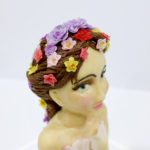
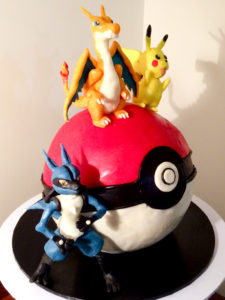
41 comments
Skip to comment form
Love your site. Thank you
Awesome. What type of fondant would you mix with it?
Author
Hi Pamela, I make my own fondant, the recipe is on the blog. However any fondant you like the taste of that you’re able to make basic models with will do – just add a tiny bit of tylose or CMC to it then knead into the modelling chocolate.
Thank you for the information – where would you buy Cadbury Melts white chocolate please?
Author
In Australia, they’re in the baking section at Coles, Woolworths and IGA, they go on sale quite often. They are almost identical to Cadbury Dream white chocolate, but in little discs instead. Any basic eating white chocolate with at least 23% cocoa solids will give pretty much identical results. As a basic guide it should have a total fat content of roughly 30% (Dream is total 32g of fat per 100g and 31% milk solids). When Cadbury dream goes on special at half price I grab 20 bars at a time….
Thank you 🙂 I’m in the UK and we don’t have that sadly….We have Cadbury’s of course but not these….bummer 🙁
Author
Any Baking melt will give you an excellent result, or any white compound chocolate that tastes nice will work perfectly.
I use Cadbury in my mud cake recipe And ganache
Author
Callebaut is my favourite. But Cadbury always gives a good flavour in cooking… and in general I can find it easily no matter where I am or what time of day it is and it regularly goes on sale.
Hi where do you buy your corn syrup please? I only can find it at cake decorating supply shops in Australia and it is expensive. I too have tried glucose but not an overall good texture.
Author
I buy it at my local IGA. I have found it at a couple of IGA supermarkets in Perth for $6.99, but it is really hard to find and goes out of stock quick. The cake supplies shops charge pretty high prices for them… I would try to source it online if you can’t find it at a local shop. If all else fails even at $17 a bottle from Bakeboss making your own modelling chocolate still works out a lot, lot cheaper than buying ready made modelling chocolate.
*update – Korean White corn syrup works exactly the same and costs a lot less. Korean corn syrup can be found at most Korean or general Asian grocers very cheaply. I buy it in 5 KG containers for $15.
Such an awesome tutorial and recipe! Thank you for sharing 🙂
I love working with modelling chocolate, although it does add quite a lot to the cost of a cake. I love the way you can add bits and blend in when making a 3D cake. I sometimes add it to sugarpaste as it helps to stop the sugarpaste drying out so quickly, thus giving a bit of extra working time.
Author
It’s can be expensive to buy ready made, but making it at home in bulk, means you can make it for less than the cost of bought fondant.
Definitely worth getting familiar with making it. I make it cheaper again by using modelling chocolate for embellishments and parts of decoration. If you’re a business, then the huge amount of time saved because you don’t have to wait for the modelling chocolate to dry like sugar past and fondant more than pays for the cost of bought modelling chocolate. It makes sculpted figures and flowers much faster to make.
Thanks for sharing! I live in qld and the heat and humidity make my decorating very interesting. How well do you think the firm ratio would hold up in this climate? Also I have never used modelling chocolate, after you have made something with it does it set at room temperature or does it need to be refrigerated?
Author
Once it’s set it holds up fine at room temperature, it sets at room temperature with no great issues, just takes a little longer on a warmer day.
After a day or so the surface of the chocolate will eventually start to dry out an become brittle, which means it will withstand heat well without distorting. The chocolate will sweat in extreme humidity, but it’s not usually a big issue. If I’m sculpting with it in humid conditions, I use a lot of extra cornflour to stop it sticking when I roll it out thin. Otherwise it’s just a case of regularly washing my hands as I’m sculpting so they don;t get sticky.
I have several demonstration chocolate models on a cabinet in my kitchen that have been there uncovered for 2 years with no issues. my kitchen regularly get above 34 degrees C in summer 🙂
Hi I too am in Perth, thank you for your thorough tutorial! I live northern beach area of Perth, so was wondering if you can suggest Asian/Korean grocery store this side of town? I am wanting to use modelling chocolate for flowers, roses mainly. Thanks again.
Author
Hi Miss Ruth,
MCQ warehouse in Malaga has it in 4 litre containers for $15 every now and then, they tend to sell out quickly so they only have it infrequently and I tend to buy a few bottles when I see it there.
I’ve found it in smaller amounts in several other Asian grocers, but not all of them carry it, it’s a bit of a pot luck.
Hi Mart or Seoul Mart in Perth should have it, but if that’s too far away just check at a few local Asian Grocers, be sure to get colourless Corn Syrup and you’ll be fine.
IGA in Mt Lawley often has Karo cheaper than decorating shops and IGA in Ballajura near the cnr of Illawarra cres and Alexander Drive, near Hepburn Ave, often has Karo quite cheap in large bottles.
Hi, Robert,
Thanks for all the wonderful tips about modelling chocolate. I actually feel more confident when making it now–next step trying to create figurines, though they obviously won’t be as clever as yours. At least not for a while. Lol.
I live in central Ontario, Canada and do not need to worry about the heat for a few weeks yet, but when it arrives I will be very glad of all your tips and tricks to keep it firm.
I decorate sugar cookies from home, to keep myself busy. But more of my customers are now requesting specialty cakes as well. Check me out sometime on face book at Made With TLC Cookies.
Hi.. what callebaut white chocolate do you use? Is it the W2 or W2NZ?
Thank you so much..
Author
I’ll check the boxes tonight,
Here is where I usually buy it. 🙂
https://www.bakeboss.com.au/product/3907-premium-chocolate-white-compound-chocolate-callets-15kg
Hi .here we only have glycose so to use that for 450gr white chocolate,we need 100gr corn syrup.do i add 100gr. Glycose plus the water or 100gr is total glycose and water?i need it for making some figures and numbers standing on cake so should i use the 4.5:1 ratio?thanks
Author
Hi Demi,
Glucose makes it extra crumbly, so it needs an additional 1/10th the glucose weight in water.
If you have 450g white compound chocolate, add 100gr of GLucose and 10g of water. you can always start with less water and add more as you need it. I use the 4.5:1 ratio for nearly everything, but I work in a kitchen that is normally pretty warm and I have super hot hands, try the 4.5 ratio for structural things and maybe go to 4:1 or slightly less for everything else. 🙂
Hope your projects go well. 🙂
You have given such detailed do’s and don’ts. Amazing how you have made time and had patience for the write up. So much explanation and with such clarity for anybody to follow.
The temp in our city varies from 30 C+ to 41 and above. You think the ratio should work even in these settings.
Thank you.
Stay blest.
Author
If you have hot hands or it’s pretty warm then 4.5 to one is going to work reasonably well. Our temperatures are the same in summer here and the 4.5 ratio works nicely and holds up well. 🙂
This is such a treasure trove of knowledge.
Thank you Robert for such an in-depth, patient explanation of modeling chocolate.
Hugs
hi i just
wonderded if you use cadbury dream do you have to temper the chocolate first?
Author
Hi Rachel,
You don’t need to temper at all, but Cadbury dream will produce a more brittle and dry felling chocolate.
To correct it just knead in a few droplets of water until it feels smoother, then leave to firm up. Rewarm it in the microwave for a few seconds and knead it again for prior to using 🙂
Hi. Have you tried to airbrush 50:50 ratio ? If so does it still bead? Im making a cowboy hat cake, do you think 50:50 ratio will still keep its shape for the brim? Or 80:20 fondant:choc paste? Glad i found your post😍 hope to hear back from you soon xx
Author
Apologies for the reply,
Airbrushing is always a great option for modelling chocolate. Building up colour in thin coats prevents beading up. 50:50 fondant and chocolate would most likely take too long to set. I would go 80:20 fondant to choc with a ton of tylose, Or Just straight firm modelling Chocolate.
Hi
What is the best way to store . Once made and how long will it keep ?
Thank you
Coral
Author
Air tight container at room temperature for about 2 months. Or in the fridge for 3 months.
fine in the Freezer for 6 months or more. 🙂
Thank you for your reply 😊
I live in South Africa in a town called George. Your advice toe deal with warm weather and hands helped me so much. Thank you so very much!
Please let me know if you do online classes. You are so talented!
Author
Thanks, glad you found it useful. I am behind in posting but in the short term I am working on doing more free YouTube tutorials.
Great tips and details information for modelling chocolate.. Thanks a lot…
Author
Thank you for reading. 🙂
Have you every made modelling chocolate with dark chocolate? Does it work are the ratios the same ?
I’m trying to make it dairy free, thus avoiding the white chocolate
Author
Yes, the ratios for dark are different, if you’re experimenting with dairy free and super dark blends of chocolate you will need to adjust the amount of corn syrup.
Try a standard amount or a dark chocolate ratio, set it and knead it. If it’s still too crumbly add more corn syrup. Record how much you add and then you will be able to duplicate it reliably.
Hi Robert,
Thanks very much for all the super useful information about modeling chocolate. Can’t help to notice a picture of your very detailed and delicate flowers. Very beautiful 💕💕
I wonder whether I could also create such delicate flowers with thin petals in a hot climate Thailand. My room temperature is around 30-31 celcius. Would your 4.5:1 ratio will be firm enough for such climate?
And also, how to glue or stick petals do they will not droop?
Regards,
Kris
Author
Yes, a higher ratio will be better for warmer climates, we have a week or so each year in Perth where the temperature and humidity is pretty tropical. Try a firm ratio, definitely 4.5 or firmer and mix in a bit of fondant to help keep it flexible and manage the oils. It can be surprising how stable a firm mix is even in warm humid climates, fine thin petals will hold, but it is sensible to try to keep a bit more thickness in the centre of the petal and make it look thinner than it is by creating a very fine edge.